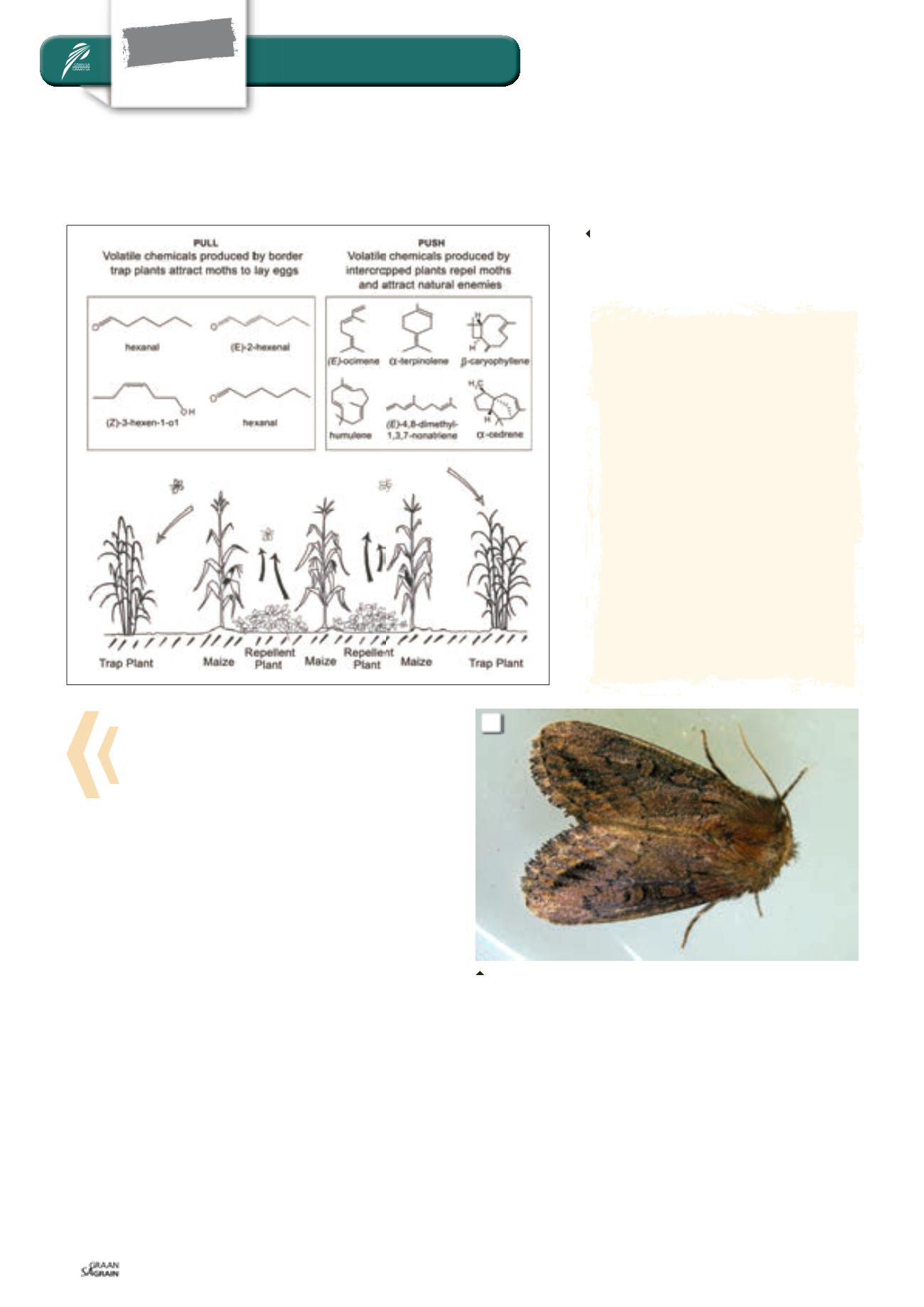
Stem borer larvae are known to spread fungal spores when they
move around the plant, and the wounds that are produced during
feedingexposesmaizeears tonatural fungal infectionand concomi-
tantmycotoxinproduction.
Studies at the ARC-Grain Crops Institute (ARC-GCI), in Europe and
the USA have shown that genetically modified maize (Bt) that is
toxic to stem borers, indirectly reduces Fusarium ear rot and con-
comitant fumonisinproduction. This indicates that
B. fusca
interacts
with
Fusariumspecies
resulting inFusariumear rot andconcomitant
fumonisinproduction.
Methods for the management and control of maize stem borers,
Fusarium ear rot and fumonisinproduction inmaize:
Use of geneticallymodifiedmaize (Bt)
Bt maize hybrids genetically modified to produce proteins that are
toxic to stemborers are less prone toFusariumear rot infection and
fumonisinproduction compared tononBtmaize.
Studies at the ARC-GCI, in Europe and the USA have consistently
shown that the planting of Btmaize indirectly reduces Fusarium ear
rot and fumonisinproduction.
Push-pull system
In the push-pull system (
Figure 1
), trap plants such as Napier grass
planted aroundmaize fields, produce compounds that attract adult
stem borer moths. These plants prevent moths from landing and
laying eggs onmaizeplants.
Plants that emit repellent chemicals such as
Desmodiumuncinatum
(silver leaf desmodium) repel stemborers from layingeggsonmaize
in an intercropping system.
Desmodium uncinatum
is a highly nutritious fodder cropwith nitro-
gen fixation properties.
Desmodium uncinatum
originates in South
America and it can persist in regionswith dry seasons.
Desmodium
uncinatum
has been locally naturalised elsewhere in the highland
tropics and humid subtropics, conditions that could be favourable
for its use inSouthAfrica.
The push-pull system can be applied to resource-poor subsistence
farming systems tomanage stem borers. However, the effect of the
push-pull system on reducing Fusarium ear rot infections and con-
comitant fumonisin synthesis has not been studied.
Agricultural practices
Stem borer densities can be reduced through crop residue mana-
gement.
FOCUS
Integratedpest control
Special
3: A
Busseola fusca
moth.
Photo: A. Erasmus
Figure 1: A diagram showing a push-pull strategy
for cereal stem-borers
Courtesy: Z.R. Khan, ICIPE
Nairobi, Kenya and J.A. Pickett, Rothamstead Re-
search, UnitedKingdom
“
The push-pull
system can
be applied to
resource-poor
subsistence
farming systems
tomanage stem
borers.
“
Integratedmanagement of
Busseola fusca
...
September 2014
84
3


